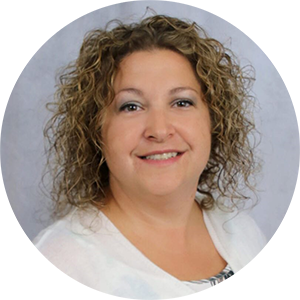Editor’s note: At the time this blog post was written, Melissa Mitchell was Chief Innovation and Strategy Officer at HealthLinc. She has since been promoted to CEO.
If your healthcare organization regularly screens patients for social determinants of health (SDOH), you know firsthand how challenging it is to staff those critical workflows.
You likely know, too, that not all patients follow up on the SDOH resources you recommend. That’s not because they aren’t invested in their care; rather, it’s because a “one-size-fits-all” approach isn’t sufficient. Some patients need additional support from their care team to address their social needs, while others may bristle at perceived handholding through a process that can feel sensitive and personal.
So, how can healthcare providers identify which patients need more personalized support? And how can busy, short-staffed organizations address diverse SDOH needs across their patient populations?
Enter the Patient Activation Measure® (PAM®)—a tool that helps you understand patients’ ability to self-manage their care so you can provide more tailored interventions.
PAM is an evidence-based survey that assesses each patient’s knowledge, skills and confidence in managing their own health and healthcare.
A patient with a higher PAM score—a higher-activated patient—is more likely to adhere to treatment plans and follow through when referred to social services. A lower-activated patient probably feels overwhelmed or unable to act on a provider’s recommendation, so they need frequent reminders or direct interventions.

HealthLinc, a federally qualified health center (FQHC) with 12 clinics that serves more than 40,000 patients annually across northern Indiana, incorporated PAM into its SDOH processes in 2022. We recently spoke with Melissa Mitchell, MS, HealthLinc’s Chief Innovation and Strategy Officer, about why and how the FQHC implemented PAM—and how its patients and staff have benefited from it.
See below for a lightly edited summary of that discussion.
Describe the process of implementing the PAM.
Mitchell: We rolled out PAM to a limited number of patients to start, and we made sure that we addressed any technical details or errors ahead of time. We worked together with our Phreesia team to implement PAM quickly and proactively adjust our workflows.
Our community health workers saw time savings within the first few months. Those results made staff more interested in using PAM, which helped implementation go even more smoothly.
How is PAM incorporated into your workflows today?
Mitchell: We ask our patients to complete an SDOH screening questionnaire that tells us if they have a transportation barrier, a language barrier, an education barrier, food insecurity—any social needs. Patients then complete the PAM during intake if we identify them as high-risk based on that first SDOH screening. Then, a community health worker is assigned to assist that patient and is informed about their PAM score so they know how much direct intervention to provide.
“With PAM, everybody along the continuum of care is aware of how much assistance each patient will need.”
With PAM, everybody along the continuum of care is aware of how much assistance each patient will need. Before we make referrals, we know what the best referral for the patient might be—and we know who we’re going to ask to assist with follow-up.
How have patients responded to PAM becoming part of the SDOH screening process?
Mitchell: Patients know when they need help. Those patients who are in the most dire situations know that they feel completely and totally lost without assistance, and they may be unable to see a way out of their situation. For patients to tell us that they need more assistance and that they would appreciate some one-on-one intervention—without them having to say it aloud—is really helpful.
From the other perspective, some patients have the capacity at their fingertips to do what they need to do—they just don’t know what that is. Those patients also appreciate not feeling like they have a babysitter. They prefer being given the resources, and they might just not have known which resources were available.
How have staff responded to PAM?
Mitchell: Staff love saving time. It’s helpful for our staff to have a list of people who actually need their assistance. It reduces burnout by not asking staff to call people that don’t want or need to take their phone calls.
PAM allows staff to deliver care to somebody who really needs it, and that warms the heart.
What part of HealthLinc’s PAM workflow are you most proud of?
Mitchell: We’re proud of our ability to rapidly innovate and implement PAM, which required a lot of staff dedication and engagement. I’m proud of our ability to work with a great partner to get the technology, the data and programs we needed.
The other part I’m proud of is that we didn’t find out a little bit of information and get comfortable just sitting with it. We took what we learned and rapidly trained other staff members in other parts of the organization so that we could make a greater impact from day one.
What do the next steps look like for HealthLinc? Is your PAM workflow sustainable?
Mitchell: I would say it’s unsustainable not to do it. We’re able to serve so many more patients in the same amount of time —and with the same amount of resources—compared with what were able to do before we implemented PAM.
We’ve expanded our PAM workflow to six of our sites and anticipate that soon, we’ll expand it to the rest. For us, PAM is really important.
What advice do you have for other healthcare organizations exploring solutions like yours?
Mitchell: You cannot solve a problem unless you know about it.
Yes, adding PAM is an additional workflow, an additional step. But when you understand more about your patients, you can do more to help them. And ultimately, that helps you.
If you’re participating in quality programs, if you’re working on patient interventions, if you have providers burned out because they’ve been trying to get a patient to the other side of their condition for so long and cannot seem to make a change, you can find out why. You can get more information on what is keeping your patient from being able to do the things they need to do for their own health.
“Yes, adding PAM is an additional workflow, an additional step. But when you understand more about your patients, you can do more to help them.”
Learn more about how PAM helps healthcare organizations support patients with social needs here.





